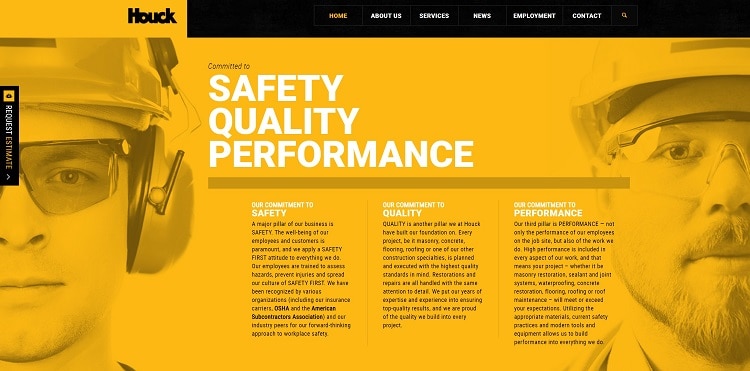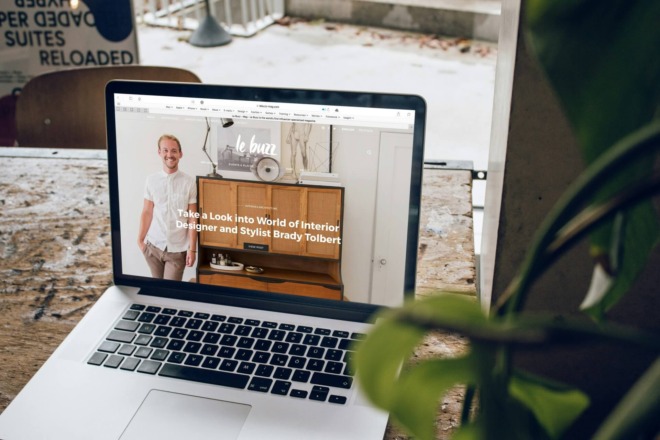If you want a consistent presence, you must know who you are as a brand and use the same strategies everywhere. Landing pages are just one place where you should promote your brand voice and image. Customer perception isn’t only for business-to-consumer (B2C) companies. Your business-to-business (B2B) company must focus on your presence as well, which is why you should implement some key branding strategies for your landing page.
Around 90% of people say they are influenced by factors such as color in their impression of a brand. Think about the colors, words, tone and images that showcase who you are as a company. How can you send a consistent message that sticks with potential customers?
Branding strategies share many traits in almost any type of business. However, they may apply a bit differently to an industrial landing page. Here are the factors you should be aware of that make your name stick in visitors’ minds.
1. Find Your Unique Value Proposition (UVP)
You likely have at least a few competitors in your industry. Study them and decide how your brand is different. What is your UVP? What makes you stand out from others?
Once you know your UVP, strive to be the absolute best in that area while being as good in others. You can likely match price, but what else can you bring to the table? Do you have more personalized service or perhaps more experience?

One way TexTech stands out from its competition is through the level of research and market knowledge it provides. The minute you land on its page, you see the heading that reads, “The global leader in the research, development and manufacturing of innovative, high-performance materials.” The words make it clear that the company is on the cutting-edge of technology in aerospace, automotive and ballistics.
2. Segment Your Audience
Do you only have a single landing page? You may want to rethink that. By segmenting your audience, you can create a much more customized approach.
Think about the pain points each group of your users faces. Now, show why you have the solution to that problem. Filter traffic to the appropriate page and track your results with A/B tests. You’ll likely see a big increase in conversion rates thanks to personalization.
3. Highlight Your Strengths
There are likely a few things you’ve worked to attain as a brand. Show off what you’re most proud of to potential clients. If you have the safest work environment, explain why that is so and how much your employees mean to you.
Think about what makes you stand out as a corporation and include info on that in your headings, images and bullet points. Make it skimmable for the reader, as it impacts their view of your brand but may not be the final determining factor in their decision to do business with you.

Houck uses three words to showcase what it’s most proud of about its brand. It starts with the heading that reads, “Safety, quality, performance.” Then, it breaks down each pillar of brand philosophy with more detail about how that applies to their work, employees or customers.
4. Be Consistent
If you promote your fast turnaround on social media, don’t suddenly create a landing page talking about your attention to detail. While it might be true, you’ve already set the stage that you turn around projects fast. While you can certainly let them know you also pay attention to detail, keep your focus consistent.
It’s difficult for brands to create a memorable identity. Don’t muddy the waters by trying to be too many different things to various people.
5. Build Credibility
You can say anything you want about your company, but people have no reason to believe you if you don’t give them trusted proof. Think about what factors you can add that prove you’re everything you say you are.
Examples of things that build credibility include customer testimonials, reviews, clear contact information, and membership in associations such as the BBB and trade groups.

Dedicated Computing places its contact button in the upper right corner. Clicking it provides locations and a contact form, as well as a toll-free number. This information makes the user feel the company is trustworthy.
6. Include a Call to Action (CTA)
Just because a website is industrial doesn’t mean you can’t use traditional best practices for landing pages. A CTA is a vital part of guiding the user through your site and having them take the action you want.
Think about where to place your CTA. Some people won’t want to scroll to the bottom of the page, while others like all the information before they click on anything. Cater to both types of users by placing your CTA both above the fold and further down the landing page.
Generate High-Quality Leads
The perfect industrial landing page hits all the high notes users need to get in touch with you. Remember your overall goal for the page. If you want to generate leads, then think about what qualifies them as a high-quality potential customer.
What do they need to know to decide to share their information? How can you weed out people who you can’t serve well and keep only the ones that are a good match? With a little tweaking and focus on the site’s purpose, you’ll wind up with a landing page that meets both their needs and yours.
About The Author
Eleanor Hecks is the Editor-in-Chief of Designerly Magazine, an online publication dedicated to providing in-depth content from the design and marketing industries. When she's not designing or writing code, you can find her exploring the outdoors with her husband and dog in their RV, burning calories at a local Zumba class, or curled up with a good book with her cats Gem and Cali.
You can find more of Eleanor's work at www.eleanorhecks.com.


